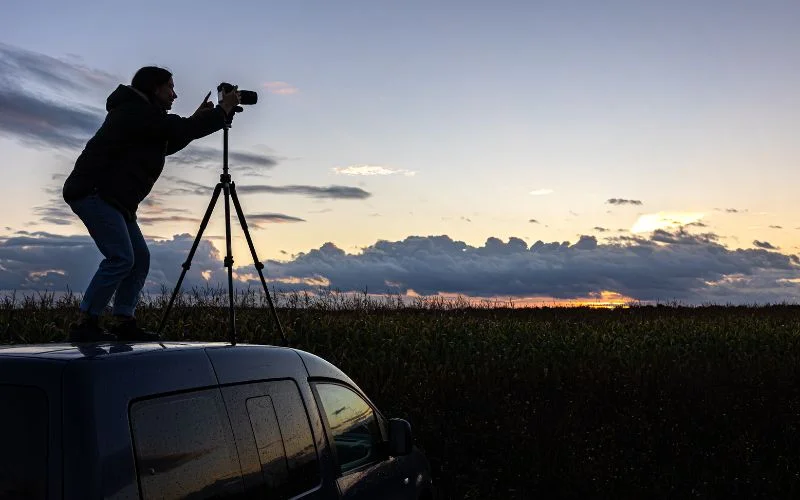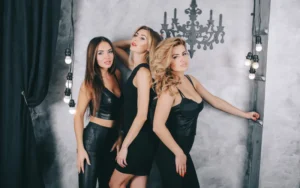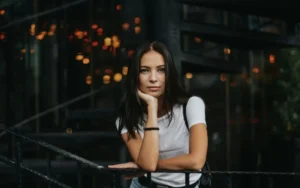If you haven’t heard of Nino Batista before, I am sure that you would have seen some of his breathtaking images on lifestyles and men’s publications.
Nino is an editorial glamour and exotic automotive photographer in the United States. He is not only one of today’s best glamour photographers but he is also known for his retouching skills.
Having the ability to be a master at what he does best, he has also been able to share his own retouching secrets. From a photographer to one of the famous trainers in the industry, he has taught photography and retouching in many cities. He has worked with Fstoppers since 2014 and he is currently their Senior Writer.
If you would like to know more about him, you can always visit his website here.
In this interview, we had a chance to connect with Nino via email and to ask him a few questions.
Tell us about yourself. How did you become a glamour and retouching educator?
A kind of interesting story, I think. As a veteran graphics designer and small business owner since the 90’s, I saw the way that industry and the economy were shifting in 2008, and I decided it was time to change industries! Luckily, my father was, and still is, a full-time photographer. This meant that while I was not hugely experienced in a shooting, I did grow up around it, so I wasn’t starting from a totally blank slate. So, basically, I went into photography for the sole purpose of trying to build a new business because my existing one was basically about to shut down.
After a couple of years of figuring stuff out, doing a lot of really crappy shoots because I had no idea what I was doing, I ended up in the automotive photography world, of all things. In 2012, I shot over 200 cars and assumed my career was now going to be in automotive. Once again, however, shifts in industry priorities ended up causing me to be dropped by the main automotive clients that had kept me so busy for most of 2012. Luckily, I was still shooting glamour pretty steadily (by this time it wasn’t totally crappy) and requests came in asking if I give workshops on the subject.
Needing to once again make up for the shift in business, I started workshops in August of 2012. It was this decision that ended up making the biggest difference in my career. Since then, I have hosted over 200 photography events in over 50 cities around the country, allowing me to make a living off of being an educator. This allows me to freely shoot what I want to shoot, what I am inspired by, whenever I set out to plan a project. So while the education circuit keeps me extremely busy, I have freedom as an artist to shoot almost exclusively what I am motivated to shoot, and not much else.
Why is teaching photography so important to you?
I’ve always said that the most tempting thing to do after you’ve become a reasonably established photographer is to give workshops or classes. The allure of the extra income is the main driving force, of course, but what happens is, most photographers who try giving classes realize very quickly that it’s fairly difficult. Between planning, scheduling, curriculum preparation, marketing, personal interaction with students, and of course hustling to make it financially worthwhile, most photographers give up the idea after just a couple of attempts at workshops.
The short answer is, being a full-time educator isn’t for everyone. I found, thankfully, that I truly enjoy it. It’s like being a touring musician (something I can relate to), in that you go city to city and give a performance to an audience who came out to see you. Everything from the pre-show nerves to the euphoria of giving a really intense lecture or demonstration that goes over really well is all worth it to me. I revel in every second of being an educator! And it also lets me travel a lot and that is never a bad thing.
What does retouching mean to you and how did you get into this genre of photography?
An interesting two-part question here! So, as I mentioned I was a full-time graphics designer from about the age of 16 until just a few years ago. In fact, I worked with Adobe Photoshop since version 1.0 and really started to produce client work with version 2.5. So I go way back, you could say. Upon entering photography, I immediately found that for all my Photoshop design experience, I didn’t know the proper way to do portrait retouching. I became literally obsessed with being the best retoucher I could be, simply because I wasn’t going to allow myself to fail at using a program like Photoshop that I already knew so well, for so long.
Yeah, that is the testament to how versatile Photoshop is, but I also knew that the learning curve was going to be steep. As a person who never spent one minute in college, never took a workshop and never took any private classes of any kind of any subject ever, I actually surprised myself when I chose to invest in an amazing mentor, Pratik Naik, to help me get going on portrait retouching several years ago. I was obsessed enough to get over my “I learn things on my own” attitude because I was determined to be good at it, and in two sessions my life was forever changed; I was now in love with retouching for life.
As for how I ended up in the glamour genre, I guess I’ve never really thought about it in detail before. That said, I did start off shooting what was simply “model photography”, with no predetermined idea of any specific genre. After only a short while, I decided I wasn’t a fashion photographer simply because I knew very, very little about fashion, and most of what I was shooting didn’t look like anything remotely seen in fashion ads or magazines.
Eventually, someone said I shoot “glamour” if I recall correctly, and I decided that was as good a label as anything, and just kept saying “I’m a glamour photographer.” Curiously, I’ve shifted a bit in recent months, and going into 2018 you may start seeing some different sort of aesthetics in my work, something I am tentatively referring to as “editorial glam”.
Check out these Top 10 Photo Retouching Software
There is a very fine difference between “good retouching” and “bad retouching”. Can you please let us know your perspective on that.
Good retouching is nearly invisible. You see an image, it looks extremely perfect (industry caliber, like in major advertising), but nothing stands out as “Photoshopped” or just looks weird. Bad retouching? Well, anything that isn’t that!
Can you tell us what is the first step to retouching an amateur photographer should know?
Practice. Practice. Practice. Stop assuming that simply watching a tutorial means you now know how to retouch. Retouching is an art and should be approached with respect, as you would any art. You will fail at it at first, and that’s ok. Do a lot of really terrible edits, and keep learning. Remember that information is not knowledge! There is tons of information on the web about retouching, but until you process it all in your brain and practice countless hours, it will not become knowledge. Did I mention practice?
What is the most challenging part of retouching? Any trick you can share with our budding audience of a photographer to help them here?
In portrait work, your entire existence as a retoucher is going to be based on skin retouching. Master that, and every other aspect of your retouching will benefit. That said, perfect skin retouching is going to take time to learn and practice, as I mentioned above. You want skin texture, but you want everything to be perfect; remove the term “skin smoothing” from your vocabulary. You want perfection, not smooth.
Which method do you mostly use while skin retouching?
After some basic healing, dodge and burn is the only way to go. If you master dodging and burning for skin work, the world is yours.
How long would it usually take for you to edit a RAW image?
I get asked this a lot! For me, it varies wildly. I am not a beauty photographer so generally speaking my edits go fairly quick. If I had to say, I would estimate between 10 minutes and 1 hour per image. Keep in mind, 6-7 years ago, I was 2-3 hours per image!

Can you give us a little insight into your personal editing workflow?
It breaks down like this for me, but honestly, it’s just based on industry standard workflow, and I do it in this order:
1. Raw processing in Capture One Pro, which includes color correction, skin tone balancing, white balance, highlight and shadows adjustments, and some of what I call “pre-grading” color work (which just means I do some light color grading to get the palette started that I will eventually finalize in Photoshop).
2. Export to Photoshop as 16 bit PSD, AdobeRGB from Capture One Pro.
3. Healing
4. Dodge & burn for skin
5. Frequency separation for skin work (as needed, if needed)
6. Major fixes/reconstructions (if needed)
7. Liquify (if needed)
8. Additional color correction (as needed, if needed)
9. Color grading (varies shot to shot)
10. Final “mastering” to account for exposure, contrast, special effects, etc. (varies shot to shot)
Besides photography what do you usually love to do?
Apart from being a proud single father of 3, I am also a musician. Music is actually my main passion in life, to be perfectly honest. I play daily and listen to music non-stop. It’s been over a decade, but I may join a band soon and start gigging again. Why not?
What advice would you give to somebody who is just starting out as a photographer and who is trying to master retouching?
Don’t try to master it simply by trial and error. Invest in a class, a workshop, or a mentor. It’s fairly complex at first, and by attempting to learn it trial and error, you will take 20 times longer to get where you want to go, if not more.
Check out 30 Premium Retouching Video Tutorials By Nino Batista & master the skills of retouching!

















